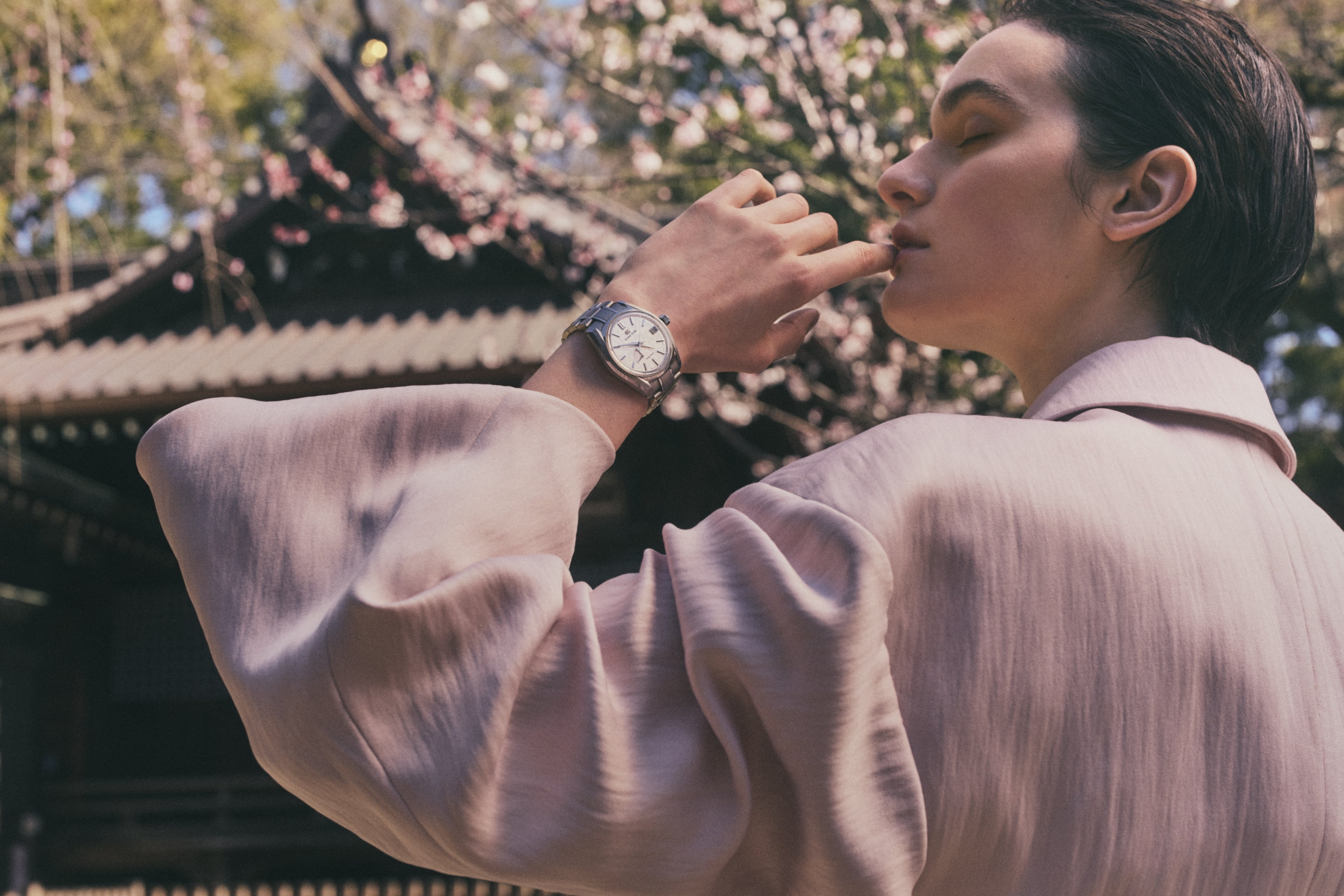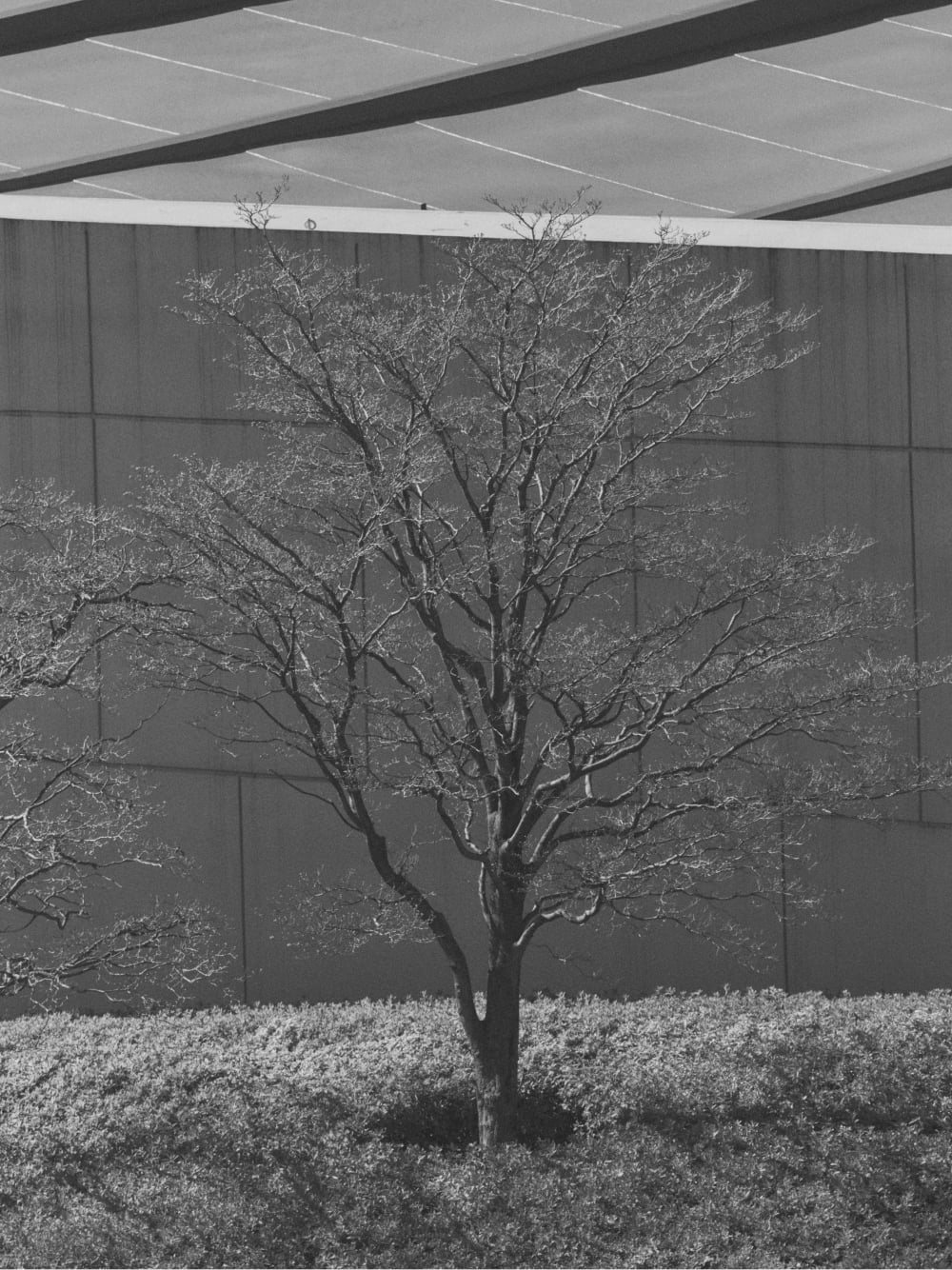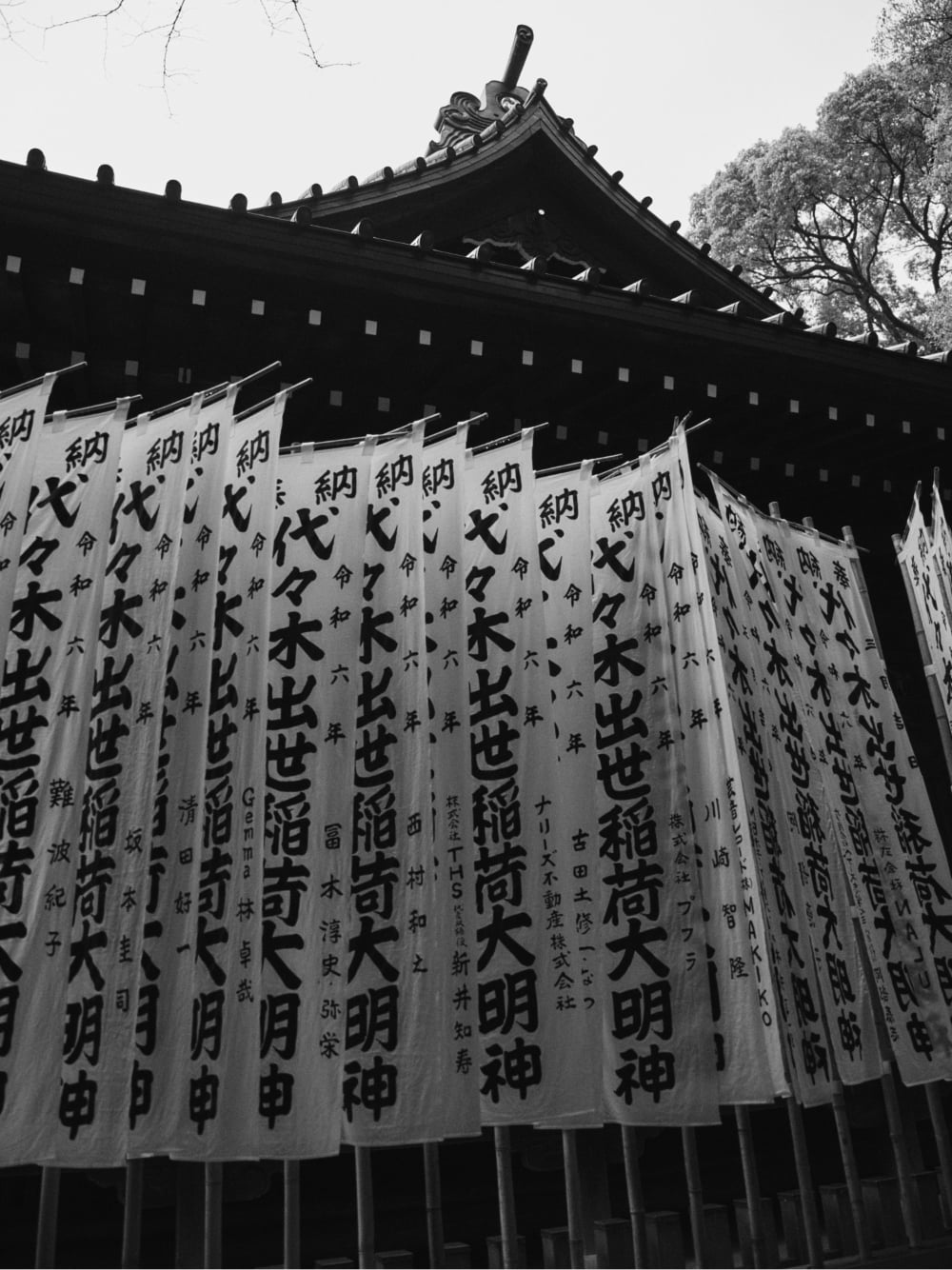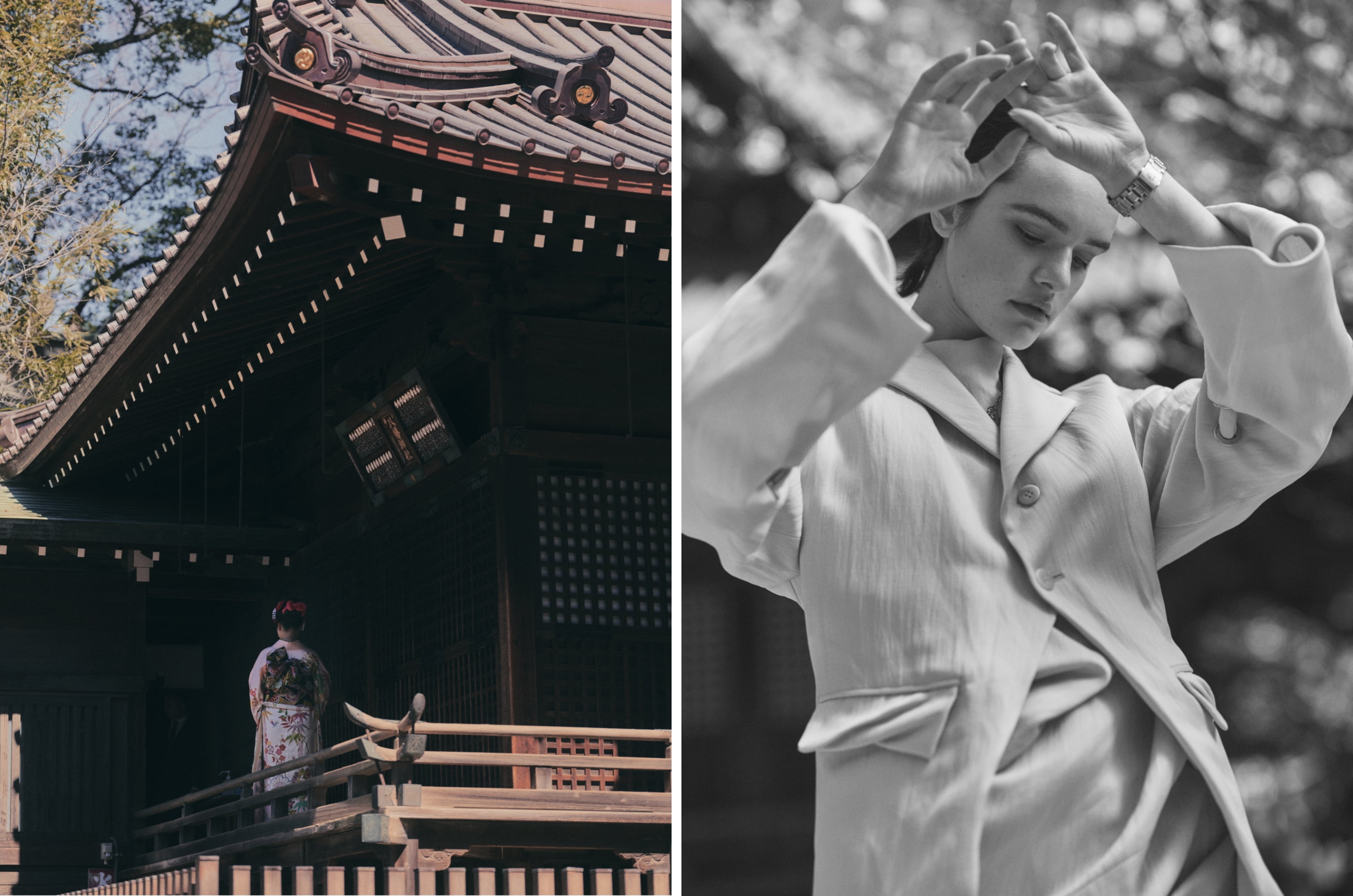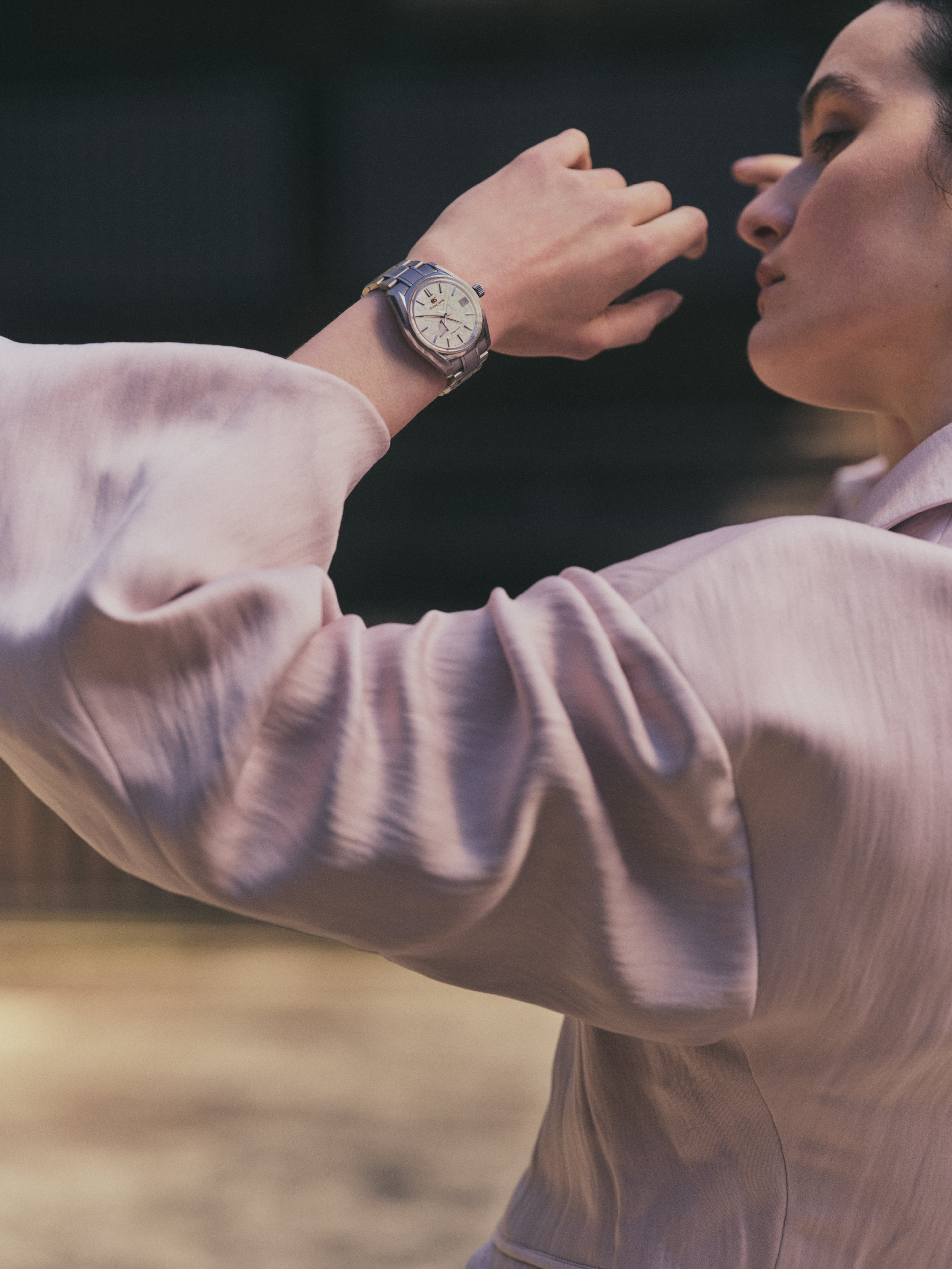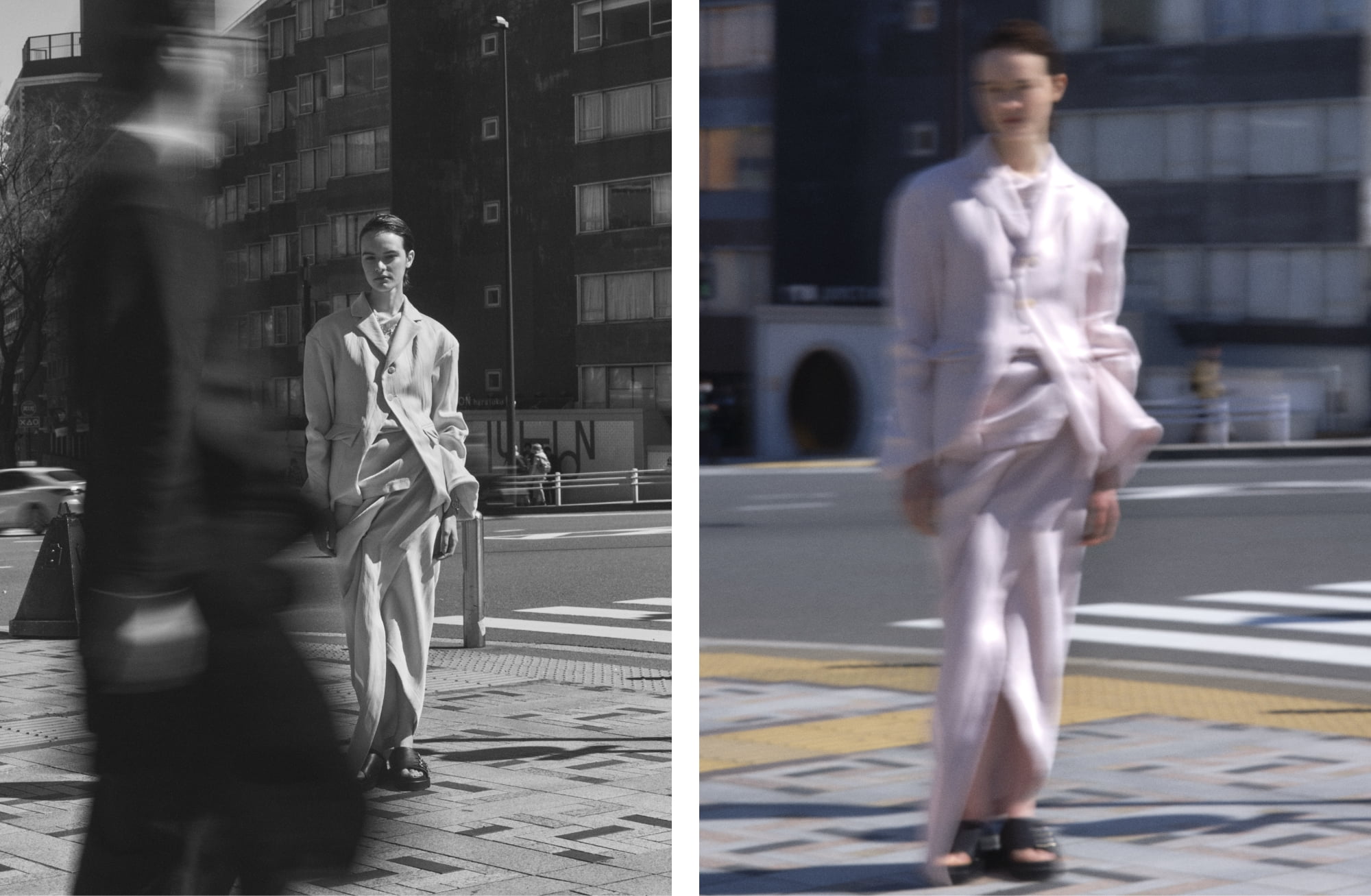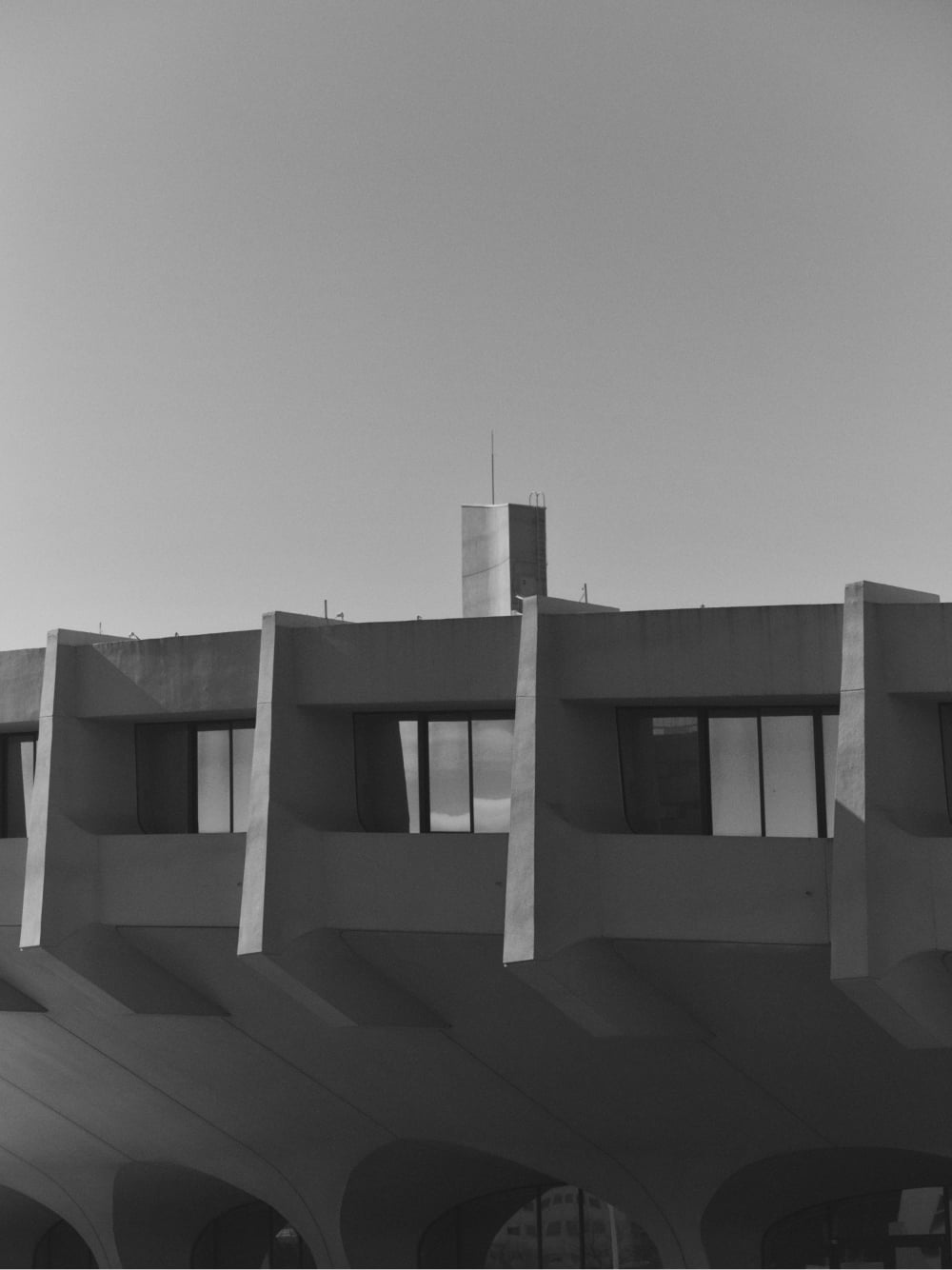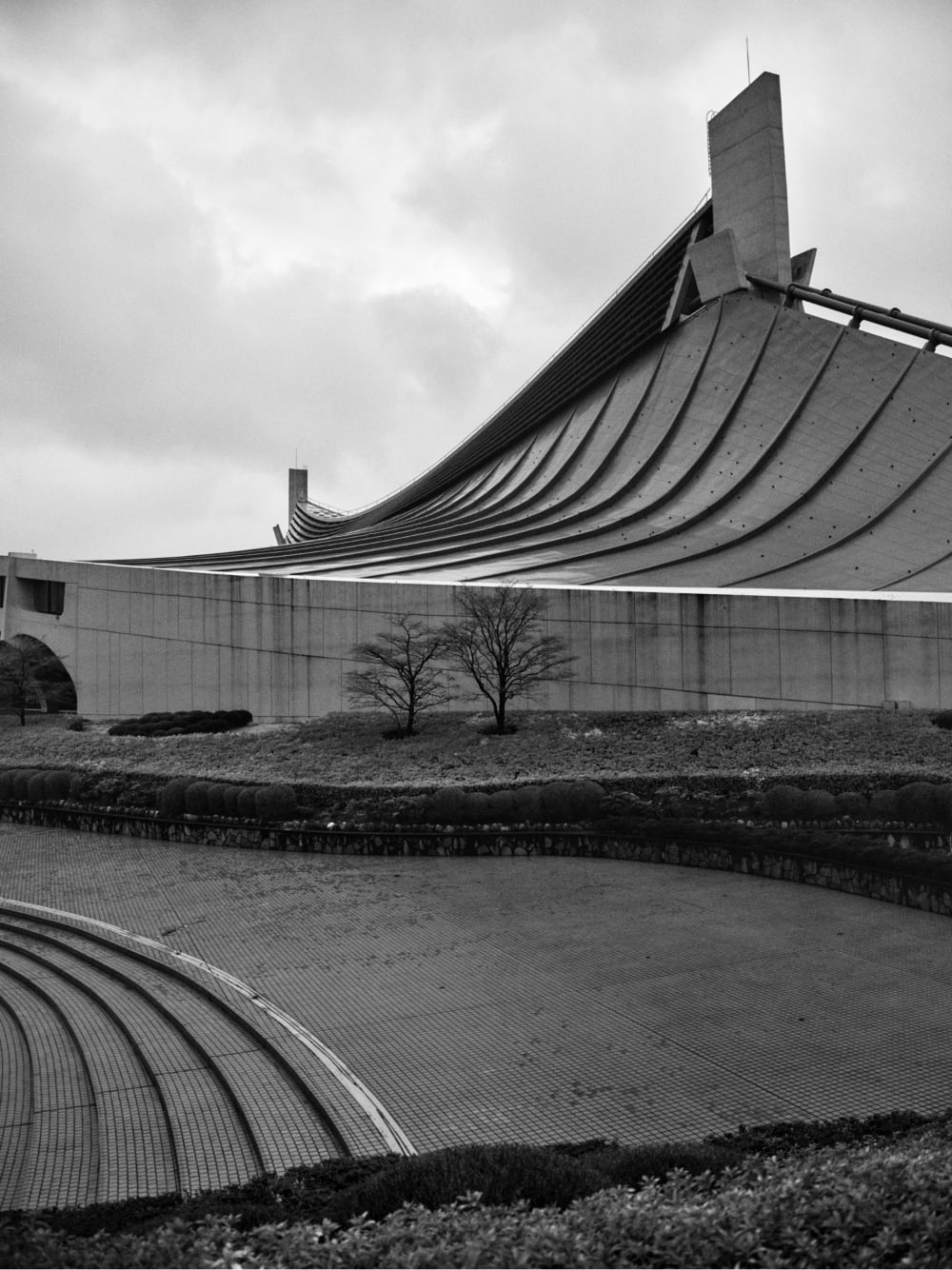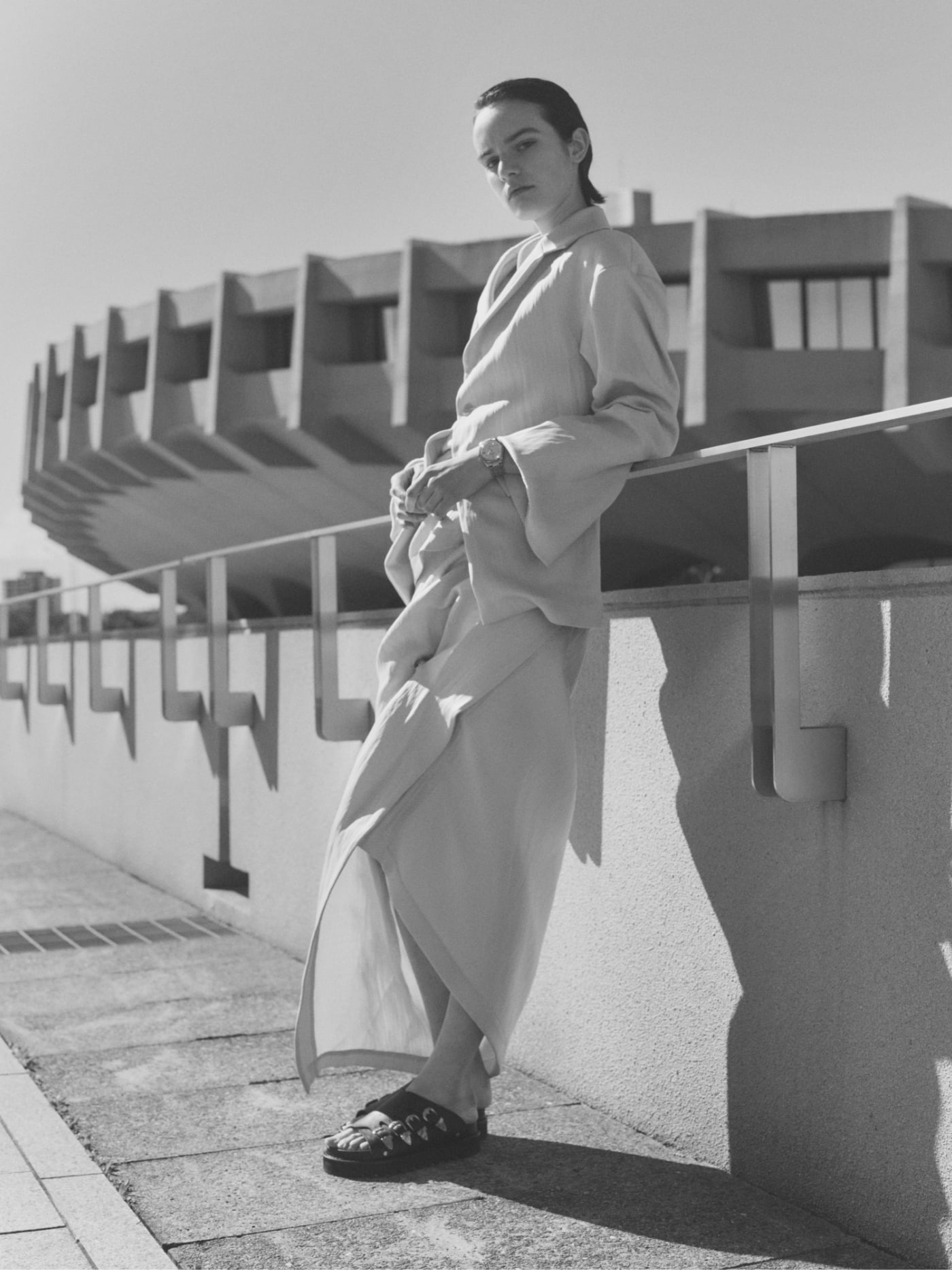Japanese aesthetic sense and craftsmanship.
The aesthetics of tradition and innovation continue to mark the passage of time around the world today.
Masterpiece architecture that symbolizes the expertise and aesthetic sense of Japan.
Tokyo’s atmospheric cityscapes project peoples’ lives and a rich range of expressions.
Minimalism and functional beauty. Emotion and elegance.
Marking the time in Tokyo, from the days of old into the future.
International photographer Josh Olins, whose work resonates with the aesthetics of Grand Seiko, captures images of modern Tokyo.
*****
The SBGA413 dial portrays a panorama of cherry blossoms drifting into a river and swirling onto the water’s surface, where they float and twirl, forming a hana-ikada.
The scenery changes from fashionable Tokyo neighborhoods such as Harajuku and Omotesando to Yoyogi National Gymnasium, the world-famous structure designed by legendary architect Kenzo Tange.
Nearby are the Meiji Shrine and Yoyogi Hachimangu Shrine, demonstrating a fluid transition from innovative fashions to a more traditional atmosphere.
LOCATION
HARAJUKU - OMOTESANDO
Yoyogi National Gymnasium
-

The legendary Kenzo Tange rose to global fame, likely before any other Japanese architect. It was his “Yoyogi National Gymnasium” – a structure completed in 1964 – that made him famous worldwide. Walking from Harajuku Station in the direction of Yoyogi Park, the sight of this arena gradually comes into view. Even today, 60 years after its completion, there has been no change in the graceful forms of the 1st and 2nd Gymnasiums, which are linked together by the flowing curves of the roof.
This futuristic building, erected from concrete and steel frames, was made with a construction method known as the “suspension roof structure. ”One or two main pillars raise up the entire roof like a tent. This allows there to be expansive space in an atrium, free of any pillars, enabling spectators to truly concentrate on the events taking place. Such a streamlined construction, with the massive roof hoisted up over Yoyogi National Gymnasium, was powered by the use of truly challenging and advanced technology.
It is said that Tange used this cutting-edge architecture, with its position adjacent to a rich green park, to embody Japanese beauty. For the people of Japan, who were in the midst of the country’s postwar reconstruction at the time, this must have served as a symbol of the bright future to come. Grand Seiko, likewise, sets its sights on the challenge to create the best possible watch. With Grand Seiko’s finely formed silhouette and sophisticated technology and craftsmanship, there is a sense of resonance with Tange’s architectural masterpiece.
-
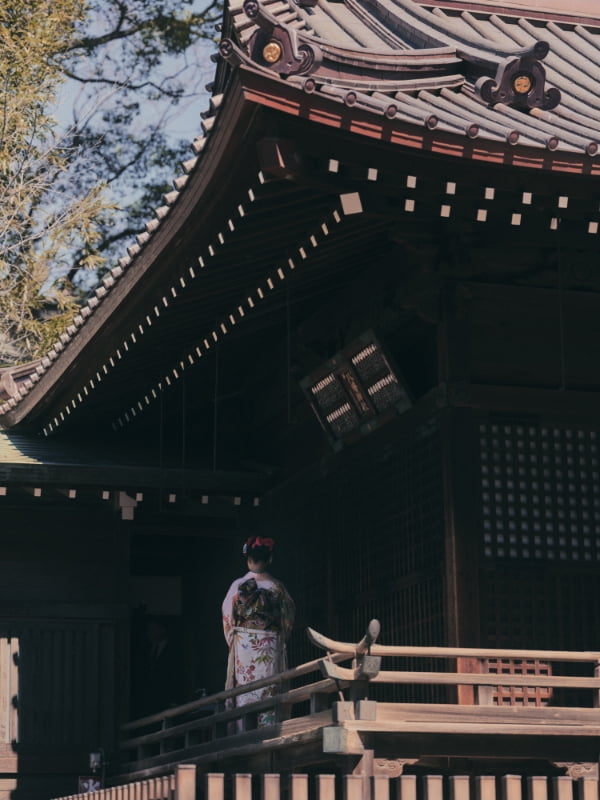
Yoyogi Hachimangu
In Perfect Days, the 2023 film directed by Wim Wenders set in Tokyo, a man named Hirayama works as a cleaner of public restrooms. In the story, there is a special spot where Hirayama enjoys kicking back to eat lunch. This is Yoyogi Hachimangu Shrine, a structure resting in the midst of abundant trees and other greenery. This renowned shrine is located within the Tokyo metropolis, about a five-minute walk from Yoyogi Hachiman train station. It was originally erected in 1212, during the Kamakura Period. Today, it is known as one of Tokyo’s most renowned sacred places and is visited by huge numbers of worshippers hoping to reap good luck.
Despite being in an area known for its concentration of commercial buildings and housing, and perhaps due to its location atop a small hill, little if any noise is heard when passing beneath the towering torii gate to enter the shrine grounds. The interior is rich in camphor, Japanese zelkova, gingko and other tree species, with the lush shade contributing to the sacred ambiance.
The sight of cherry blossoms after they fly from their branches and appear to dance on flowing river surfaces is often described as hana-ikada or “flower rafts.” True to this name, the dial of the Heritage Collection SBGA413 reflects the fleeting beauty of these blossoms, effectively conveying the changing of the seasons. This unassuming beauty, much like the flower petals adrift on water surfaces, is akin to the scene at Yoyogi Hachimangu Shrine, a renowned place of rest and relaxation for inhabitants of the big city.
Text by Taka Kawachi
-

-
SBGA413
Heritage Collection
This watch expresses Japan’s fluid shifting of the seasons with an image in keen harmony with the flow of time. The dial of this timepiece is truly distinctive in portraying the hana-ikada of cherry blossoms which have scattered and come to rest on river surfaces upon the passage of Shunbun, one of the 24 seasons in the Japanese lunar calendar. This elegant Japanese scene, in which cherry blossoms continue to be admired even after leaving the branch, is portrayed in a pattern resembling a rock’s surface with a greyish-pink hue that invites repeated glances of appreciation.
This watch expresses Japan’s fluid shifting of the seasons with an image in keen harmony with the flow of time. The dial of this timepiece is truly distinctive in portraying the hana-ikada of cherry blossoms which have scattered and come to rest on river surfaces upon the passage of Shunbun, one of the 24 seasons in the Japanese lunar calendar. This elegant Japanese scene, in which cherry blossoms continue to be admired even after leaving the branch, is portrayed in a pattern resembling a rock’s surface with a greyish-pink hue that invites repeated glances of appreciation.
-
Photographer
Josh Olins

-
Born in London, England, and currently based in New York, Olins excels in photography primarily seen in fashion ads and magazines. Famed for depictions rich in both strength and elegance, he enjoys a steady stream of offers from renowned magazines including VOGUE and many clients such as Louis Vuitton, Balenciaga, Calvin Klein, and Jil Sander.In the Japan Issue of Holiday Magazine, published in 2015, he earned keen attention for the inclusion of his Japan fashion editorial shoot extending throughout the entire issue.
